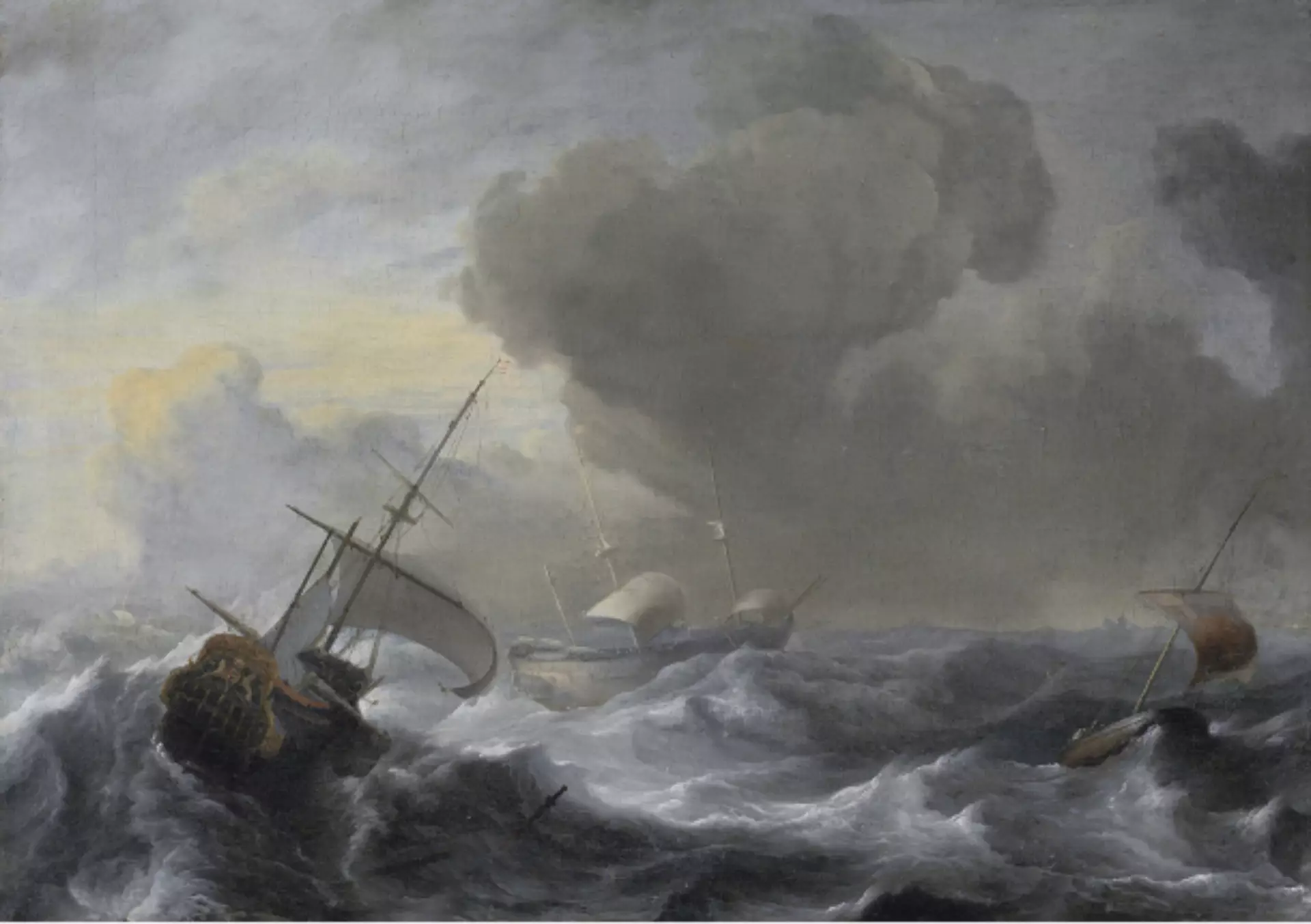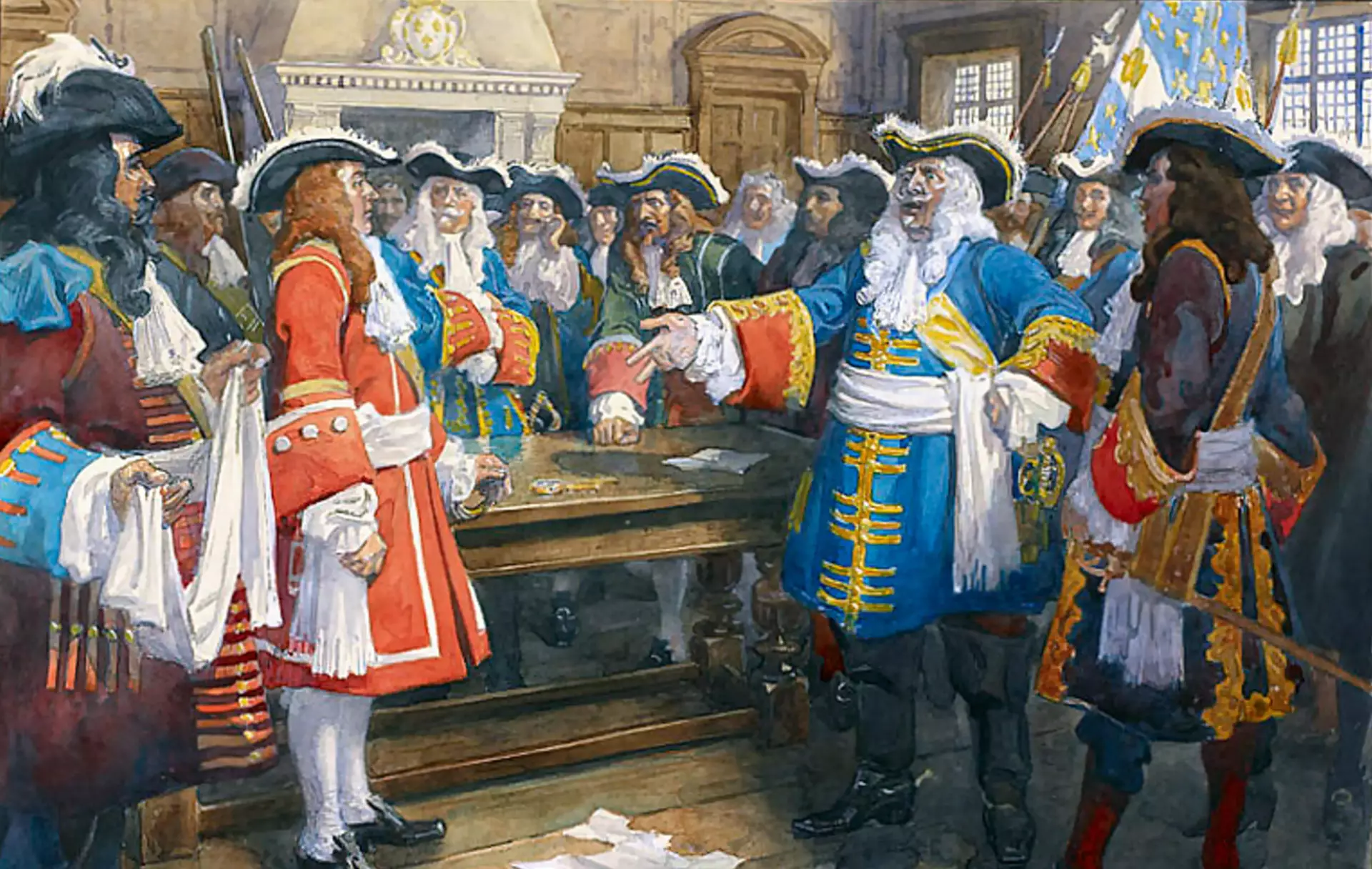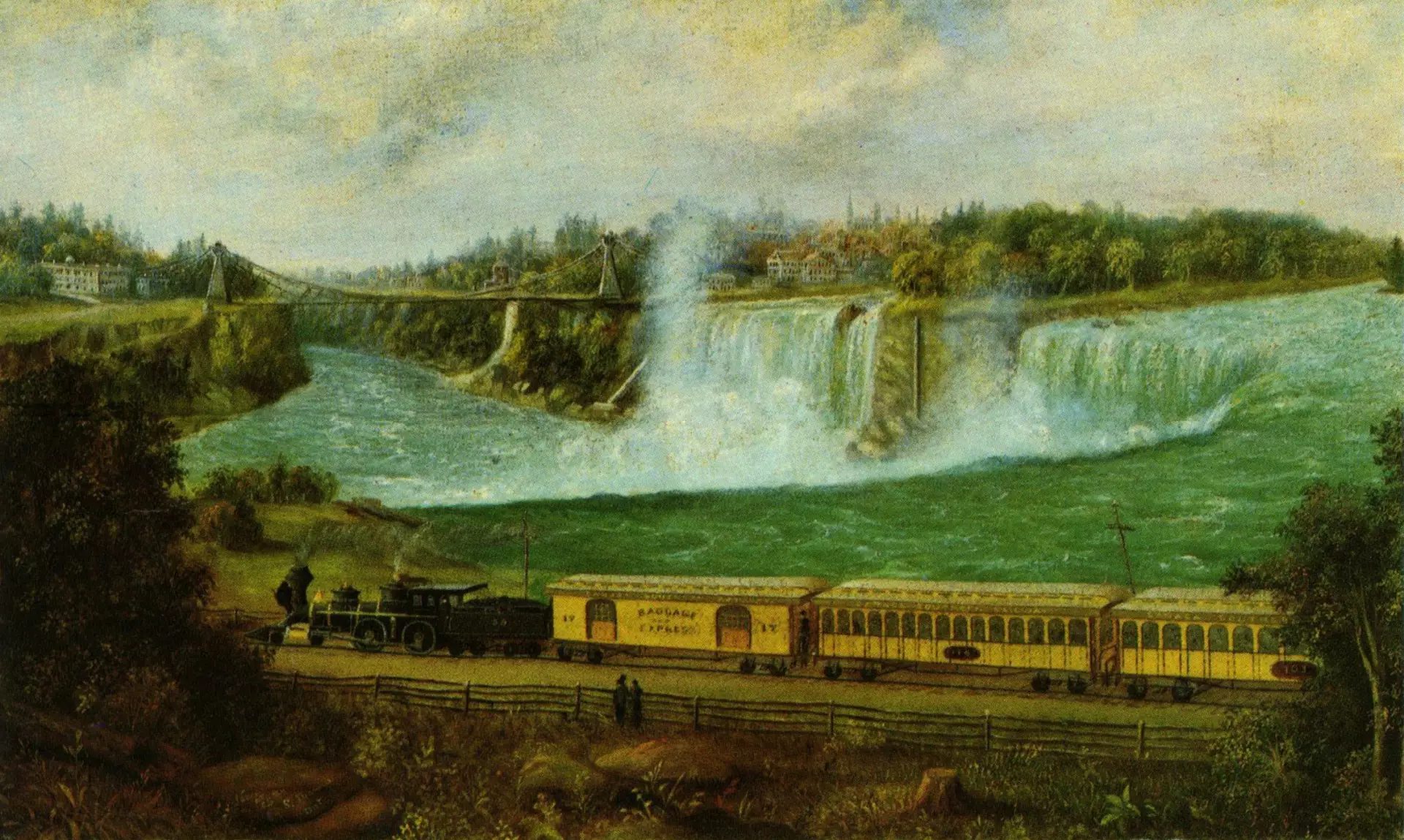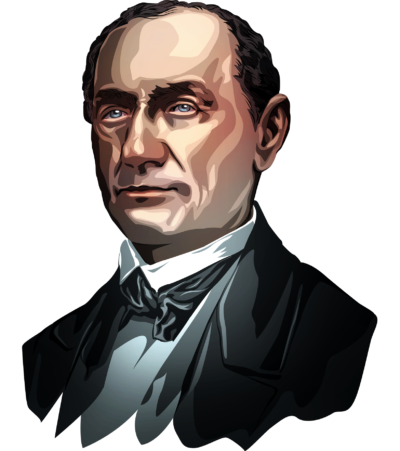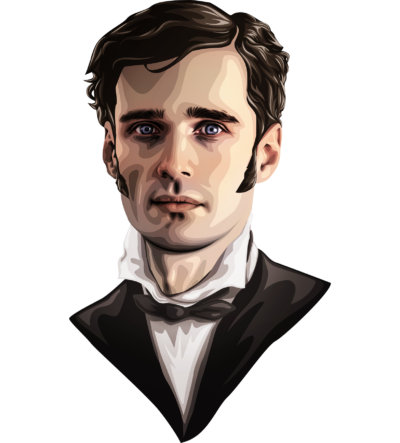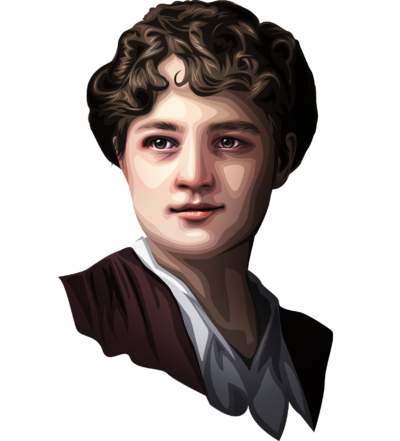The pioneer
Jean Baptiste Beaubien
The man who founded Chicago


Jean Baptiste Beaubien, a coureur de bois and prosperous merchant, inherited the ambition of his great-grandmother, Marie-Catherine, and the adventurous spirit of his great-great-grandfather, Antoine. After being chased out of Detroit, he founded on the ruins of Fort Dearborn, one of America’s largest cities: Chicago.
A born leader, close ally of several First Nations tribes, and the father of some 20 children, Jean Baptiste became the wealthiest man in the Windy City.
But a rival had plans to bring him down . . .

The control of the British . . . and the Americans
At the end of the American War of Independence in 1783, the British and Americans fought for control of the territories surrounding the Great Lakes.
The French Canadians and Métis who lived there continued trading furs, which they sent north.
American Commissioners of the Preliminary Peace Agreement with Great Britain. Benjamin West, ca. 1783-1784.
A line
of entrepreneurs
Jean Baptiste Beaubien was born in Detroit, Michigan, in 1787. His great-grandmother, Marie-Catherine Trottier, had consolidated the family fur trading business, with interests in Montreal all the way to the Great Lakes. His grandfather, Jean-Baptiste Cuillerier Beaubien, was the wealthiest businessman in Detroit.

View of Detroit, 1794. 1794.
Around 1740, voyageurs who had been hired by his father, Jean Baptiste Beaubien, were already travelling in the Michilimackinac area.
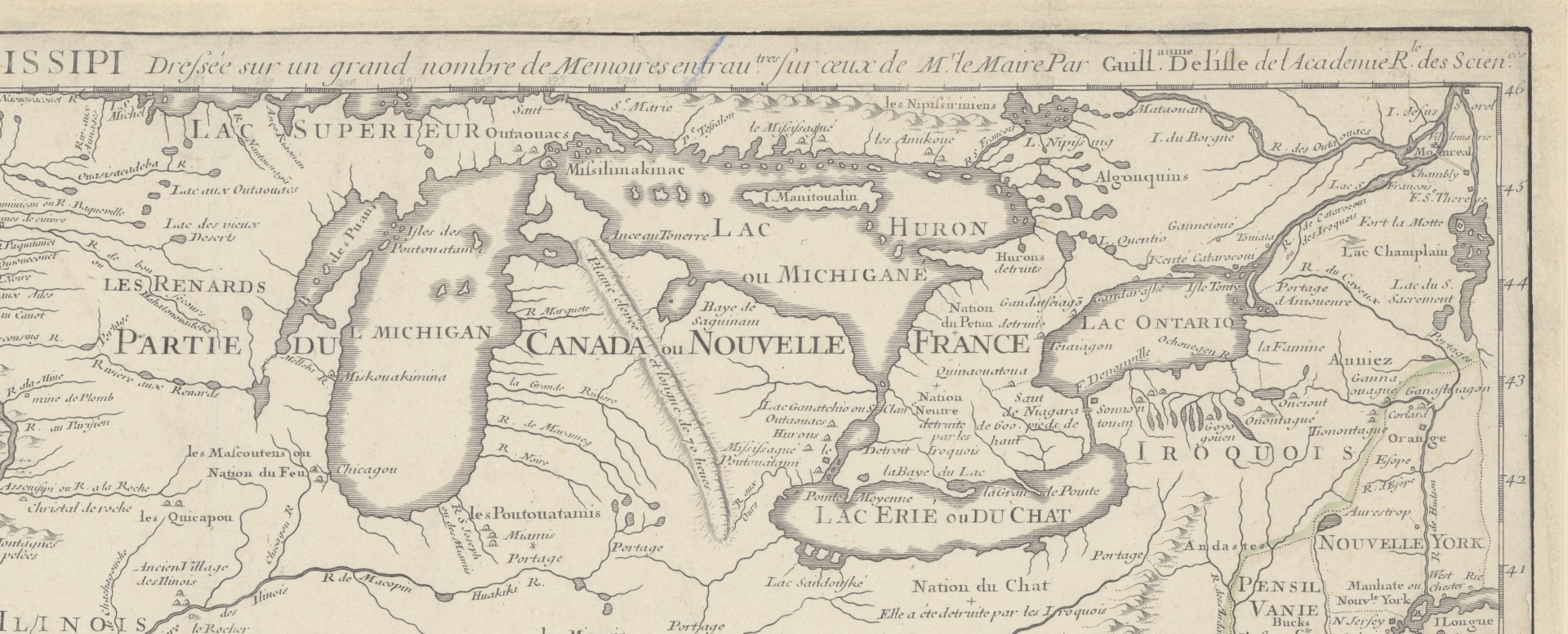
Map of Louisiana and the Course of the Mississippi. Guillaume Delisle, 1718.
PROSPERING IN TOUGH TIMES
At age 17, Jean Baptiste travelled throughout the Great Lakes region to supply the American Fur Company, incorporated by John Jacob Astor, the first millionaire of the United States and founder of a dynasty.

John Jacob Astor. John Wesley Jarvis, ca. 1825.

Inset of a Fur Trading Scene. William Faden, 1777.
Like many coureurs de bois, he fell in love with a young Indigenous woman. She sadly died in childbirth and the baby did not survive.
At 18, Jean Baptiste married the daughter of Shabbona, a famed warrior of the Ottawa tribe. Mah-Na-Bun-No-Quah gave him three children, including Madore (Médard), before she died in 1812.

Chief Shab-eh-nay (Shabbona). n.d.
THE FORT DEARBORN MASSACRE
In 1812, Fort Dearborn, located south of the Chicago River, was attacked by the English. Its occupants, mainly French Canadians and Métis, were massacred.

Chicago Massacre of 1812. Samuel Page, 1812.
Josette Laframboise, a 15-year-old Métis maidservant, managed to escape.

Chicago, in 1812. Juliette Augusta Magill Kinzie, 1844.
The couple settled on the ruins of the fort.

Old Fort Dearborn, Erected in 1803. Alfred Theodore Andreas, 1884.
Merchant, landowner and gentleman
At the age of 30, the businessman bought his first trading post, established along the wall of the old Fort Dearborn.
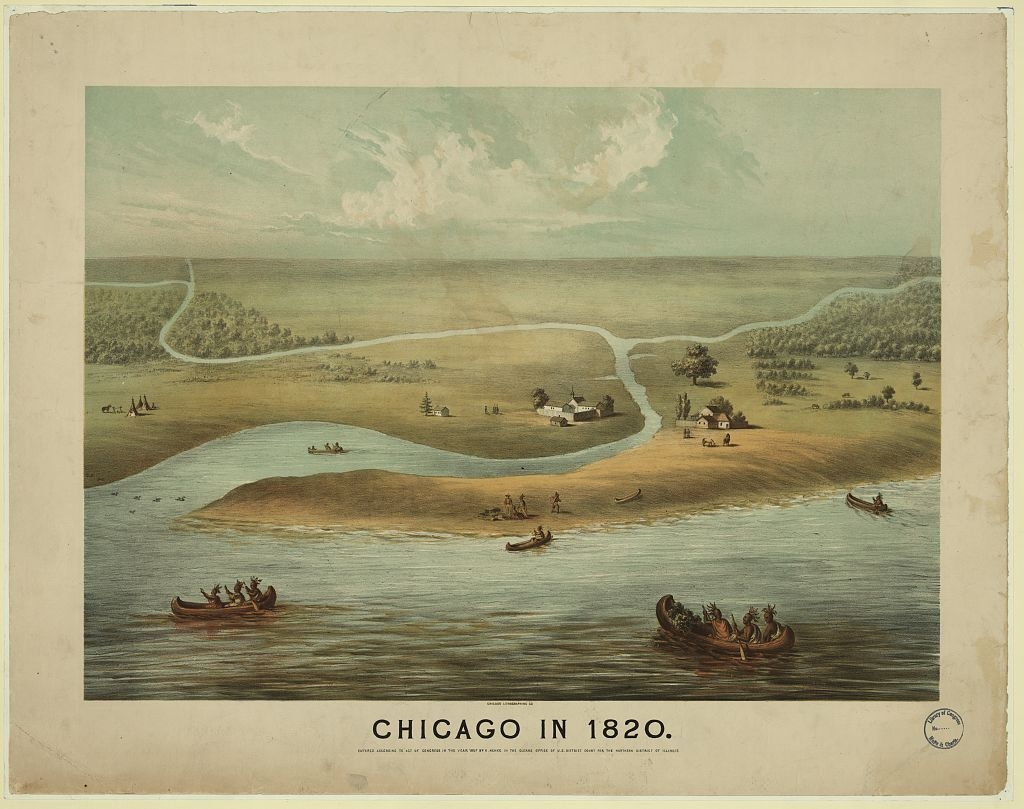
Chicago in 1820. Chicago Lithographing Co., 1867.

The project to build the Erie Canal, connecting the Great Lakes to the Atlantic, attracted hundreds of workers, some from as far away as Europe.
View on the Erie Canal. John William Hill, 1829.
The visionary Jean Baptiste invited his brother Mark, who was still in Detroit, to join him.
Over the years, Jean Baptiste purchased several trading posts and plots of land.

Map of Chicago in 1830. Alfred Theodore Andreas, 1884.

Thompson's Plat of 1830. James Thompson, 1830.
A CITY BUILT ON A SWAMP
A living legend in Chicago, Jean Baptiste was educated, elegant and refined. He was also a born leader who helped to build the Windy City at every stage, taking on several responsibilities.

Miniature Portrait of Jean Baptiste Beaubien. ca. 1825.
In 1830, the 250 pioneers who lived on the swampy outpost that was Chicago mapped out the city’s first roads.

Map of Chicago, Incorporated as a Town August 5, 1833. Walter Conley & O.E. Steller, 1933.
Jean Baptiste pushed for the creation of a parish for some 100 Catholic French Canadians living in Chicago.

Chicago in 1832 - Wolfs Point. Rufus Blanchard, ca. 1893.
He covered much of the cost of building St. Mary’s Cathedral.

St. Mary's Cathedral of Chicago (First Cathedral in Chicago). The New York Public Library, ca. 1850-1930.
Mark and Jean Baptiste were interested in literature. In February 1836, they created the Chicago Aethenium, a popular men’s literary club designed to cultivate the mind.
The meetings of its 36 members were held at Mark’s hotel. They invariably ended when the ladies arrived to dance with their husbands.
James Collins’
nasty move
The opening of the Erie Canal led to a population boom and increased speculation in Chicago. By this time, Jean Baptiste Beaubien owned numerous plots of land.

Plat Map of Chicago, 1836. Talcott, 1836.
In 1835, he accepted an offer from the City to obtain official title to his properties. He paid the symbolic sum of $1.25 per acre for 60 acres of land on a plot that is today bordered by Lake Michigan and State and Madison streets. The following year, the sale was declared null and void on the pretext that the former site of Fort Dearborn was military land.
The watchword among Chicago residents was not to bid higher than what Jean Baptiste could afford. But one James Collins kept raising his bid. The residents burned Collins’ effigy in protest on June 21, 1839, but Jean Baptiste had lost his land.
Was it a case of racism towards a man of French Canadian origin? The Daily Chicago American stated that Beaubien had suffered an injustice at the hands of the malicious Collins.

Daily Chicago American, 1839.
Resilience
After leaving Chicago to move into a mansion in Naperville, Jean Baptiste married for the fourth time, in 1859. Catherine, age 25, gave him three children, bringing the total number to around 20.

Beaubien Burial Ground. Lisa Gerald, 2008.
“General John Baptiste Beaubien” continued doing business with his colleagues in Chicago. He died in 1864.
Considered the most popular man in Chicago, Jean Baptiste was a justice of the peace in Peoria County, a school commissioner, a militia leader in Cook County, a brigadier general and, eventually a general—a title he held until the end of his life.

Jean Baptiste was a wealthy and widely respected businessman, but he did not achieve this status overnight. As a teenager, he travelled throughout the Great Lakes region to make his way in the fur trade. Perseverance was key to his success.
